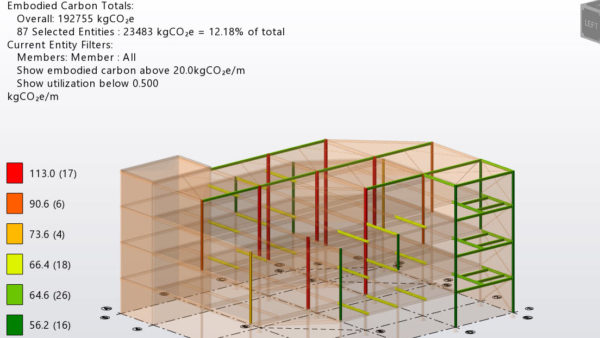
Have you truly grasped the evolution from level of detail to level of information need? If not, Thomas Ingvaldsen of Cobuilder is here to help you.
The term ‘level of information need’ has been with us in the construction sector for a few years now. When it was introduced as part of ISO 19650 in 2021, its aim was to simplify, rather than complicate, the business of information sharing in the construction industry. Nonetheless, many in the sector are still struggling to fully understand – and therefore put into practice – the concept.
To start with some background, the level of information need has become necessary because of the vast amounts of information now involved in a construction project. The days when a specific level of detail (LOD) for a designer generally corresponded to the scale of a drawing are long gone. Digitalisation, from CAD through to BIM systems, allowed the term ‘information’ to replace ‘detail’, and introduced the term ‘level of information’. This encompasses anything from the dimensions of a panel or the precise requirement for sound insulation to the number of bolts.
The availability of this vast depth and variety of information about buildings and building materials has created its own challenges, the main one being information overload for everyone involved. The purpose of setting out multiple level of information need frameworks early on in a project is to allow designers, surveyors, builders and operators to specify precisely the information they require.
Building the framework
To build the level of information need framework according to the industry standard, four terms and prerequisites must be understood:
- Object – What: The object, element or product information/data needed;
- Purpose – Why: Reason why the information/data is needed;
- Milestone – When: The scheduled time for an information/data exchange;
- Actor – Who: The party that should deliver the information/data.
The specifics for level of information need fall into three distinct categories: geometrical, alphanumeric, or document form. Geometrical information may include several different aspects, such as dimensionality, appearance, or parametric behaviour. Alphanumerical information will relate to identification and classification, while documents will be in unstructured form.
To ensure that all parties understand exactly which information is required, a common digital language is essential. Data dictionaries allow the industry to structure all data related to objects in a standardised way, from properties to classifications. This enables all parties – as well as disparate computer systems – to communicate and share information in a uniform format.
This standardisation can apply to everything from the generic properties of a product (e.g. dimensions, volume, weight), to its environmental attributes such as energy usage and carbon footprint. Furthermore, using data templates at the outset of a project ensures that there is a single source of truth and then makes it possible to monitor the product throughout the lifecycle of a building (and sometimes beyond, if reuse and recycling takes place).
Effective communication
The second requirement for the effective communication of level of information need is a digital platform for data sharing between the different parties. Just as data templates make it possible to standardise information from different sources, data-sharing platforms enable the collaborative use of these templates. An effective sharing platform must be able to connect to the different digital systems used by all the parties involved in a project, from 3D modelling tools to document repositories.
Data demands in construction continue to grow. From structural calculations through to fire performance, acoustics and environmental impact, the information that today’s players in construction are being asked to manage is mind-boggling. The ability to set out the level of information needed at the beginning of a project will make the difference between gathering essential data that will improve the quality and sustainability of a project, versus drowning in a sea of information.
To achieve this, the industry will need to move fast and put in place the systems necessary to share data, of all kinds, between all parties, throughout the lifecycle of a building.
Thomas Ingvaldsen is head of business development – BIM and digitalisation at Cobuilder.
Don’t miss out on BIM and digital construction news: sign up to receive the BIMplus newsletter.
Comments
Comments are closed.















In the wonderful world of Information Management using BIM and giving everything an acronym, the ISO 19650 Concepts and Principles Guidance states “Level of Information Need” should NOT be abbreviated and does not have an acronym. I would have hoped an industry publication would have picked up on that before publishing the article. There is no such thing as LOIN according to the Standard.
Karl, thanks for pointing that out. It was bad hair day at BIMplus towers. Article now corrected.